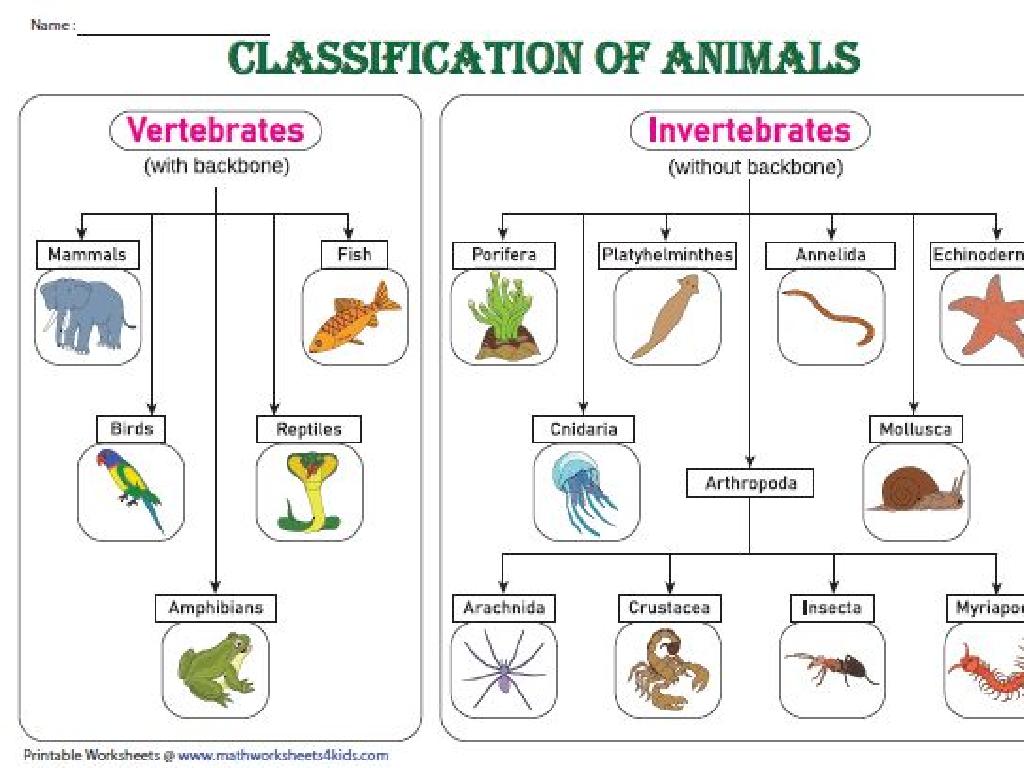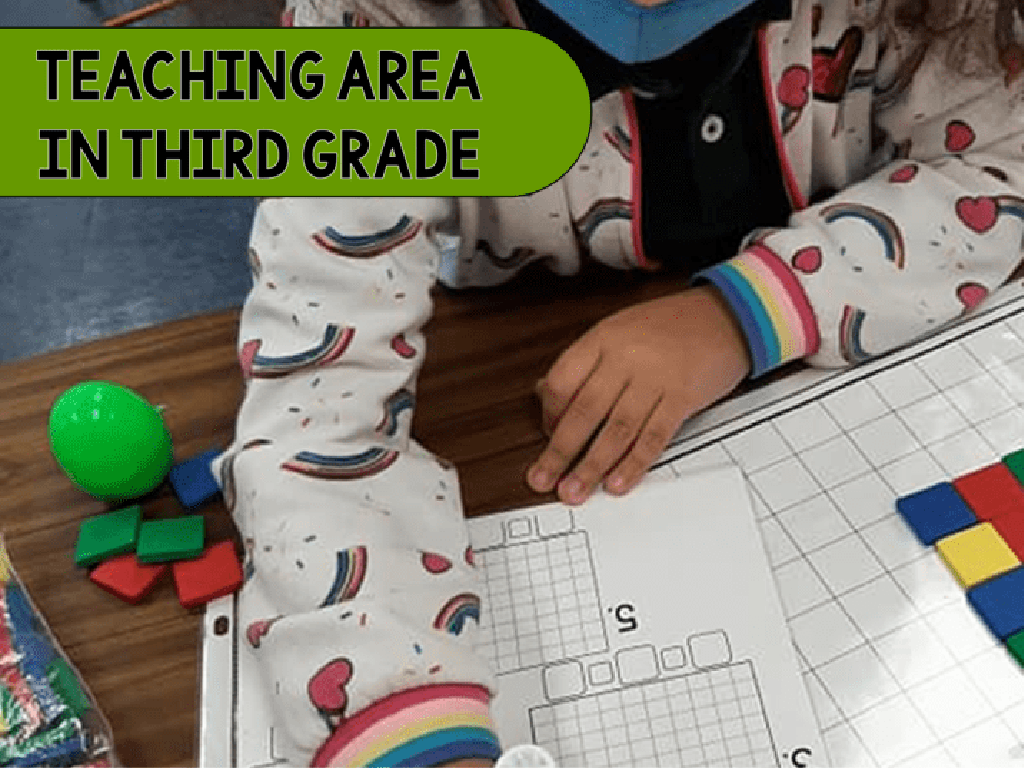Use The Meanings Of Words As Clues To The Meanings Of Greek And Latin Roots
Subject: Language arts
Grade: Sixth grade
Topic: Greek And Latin Roots
Please LOG IN to download the presentation. Access is available to registered users only.
View More Content
Unlocking Language: Greek and Latin Roots
– English is a linguistic mosaic
– English combines elements from many languages, like pieces of a mosaic.
– Greek & Latin roots are key pieces
– Many English words are built from Greek and Latin root words.
– Roots: A tool for new words
– Recognizing roots helps decipher unfamiliar words.
– Grasping roots enhances vocabulary
– Understanding roots can expand your word knowledge and comprehension.
|
This slide introduces students to the concept that English is made up of many parts from different languages, with a focus on Greek and Latin roots. Emphasize that a large portion of English vocabulary is derived from these ancient languages. By learning these roots, students can better understand and infer the meaning of new words they encounter. This foundational knowledge is crucial for vocabulary development and will aid in their reading comprehension and language skills. Encourage students to think of words they already know and see if they can identify any Greek or Latin roots within them.
Exploring the Power of Roots in Words
– Define root words
Roots are the base part of words, often from Greek or Latin
– Roots vs. prefixes and suffixes
Roots form the word’s core meaning, while prefixes/suffixes modify it
– Examples of common roots
For example, ‘bio’ means life, ‘geo’ means earth
– Understanding root meanings
Knowing roots helps decipher unfamiliar words
|
This slide introduces students to the concept of root words, which are the fundamental parts of words that carry the core meaning. Understanding roots, especially those of Greek and Latin origin, can help students unlock the meanings of many English words. It’s crucial to differentiate between roots, prefixes, and suffixes, as this knowledge will enable students to dissect words and comprehend their meanings more effectively. Provide examples of common roots such as ‘bio’ (life) and ‘geo’ (earth), and show how they form the basis of words like ‘biology’ and ‘geography’. Encourage students to think of other words that contain these roots. This understanding is a valuable tool for expanding vocabulary and improving reading comprehension.
Exploring Greek Roots in English
– Discover common Greek roots
– Roots like ‘bio’ (life) or ‘geo’ (earth)
– Understand root meanings
– ‘Bio’ as in ‘biology’, ‘geo’ as in ‘geography’
– Examples in English vocabulary
– ‘Photograph’ (photo-light, graph-write)
– Practice with word roots
– Find words with Greek roots in your favorite book
|
This slide introduces students to the concept of Greek roots in the English language, which are the building blocks of many words. By understanding these roots, students can decipher the meanings of unfamiliar words. Start by explaining what roots are and then explore common Greek roots such as ‘bio’ meaning life, found in words like ‘biology’, and ‘geo’ meaning earth, found in ‘geography’. Provide examples of English words derived from Greek roots, such as ‘photograph’, where ‘photo’ means light and ‘graph’ means to write. Encourage students to practice identifying Greek roots by finding examples in texts they enjoy. This activity will enhance their vocabulary and comprehension skills.
Exploring Latin Roots in English
– Discover common Latin roots
– ‘spect’ means look, as in ‘inspect’
– Understand root meanings
– ‘port’ means carry, as in ‘transport’
– Examples in English vocabulary
– ‘scrib’ or ‘script’ means write, as in ‘describe’ or ‘manuscript’
– Practice with word roots
|
This slide aims to introduce students to the concept that many English words are derived from Latin roots. By understanding these roots, students can begin to decipher the meanings of unfamiliar words. Start by explaining what a root is and how it forms the basis of many words. Then, provide examples of common Latin roots and their meanings, followed by English words that include these roots. Encourage students to think of additional words that share the same roots. As an activity, students can work in groups to list more words derived from the given roots and use them in sentences to reinforce their understanding.
Using Roots to Understand Words
– Decipher words using roots
– Break down unfamiliar words to find the root’s meaning.
– Interactive class examples
– Use examples like ‘bicycle’ (bi = two, cycle = wheel) to demonstrate.
– Practice with cross-subject words
– Apply root knowledge to science, math, history terms.
– Build a strong vocabulary foundation
|
This slide aims to equip students with strategies to decode unfamiliar words by understanding Greek and Latin roots. Begin by explaining how many English words are derived from these ancient languages. Use interactive examples to engage the class, such as breaking down the word ‘bicycle’ to show how its roots reveal its meaning. Encourage students to apply this knowledge across different subjects, reinforcing the idea that a strong grasp of roots can help them understand complex vocabulary in science, math, and history. Provide a list of common roots, their meanings, and examples as a reference. For homework, ask students to find words with Greek or Latin roots in their reading and bring them to class for discussion.
Activity: Crafting Your Root Word Tree
– Create your own root word tree
– Select a Greek or Latin root
– Choose roots like ‘bio’ (life) or ‘geo’ (earth)
– Find words derived from your root
– Example: ‘biology’, ‘biography’ for ‘bio’
– Prepare to present your tree
|
This class activity encourages students to explore the influence of Greek and Latin roots on the English language. Students will select a root and create a visual ‘tree’ displaying various words that stem from that root. This exercise helps in understanding how many English words are formed and can enhance vocabulary. For instance, the root ‘bio’ can lead to words like ‘biology’, ‘biography’, and ‘biome’. Provide guidance on how to choose a root and offer examples. Encourage creativity in the tree’s design and ensure students understand they will share their trees with the class, explaining the connection between the root and the derived words. Offer support and resources for students to research their chosen roots.
Class Activity: Root Detective
– Pair up and find roots in words
– Use clues for word meanings
– Look at the word parts and ask: What does this remind me of?
– Discuss meanings with your partner
– Talk about what each root could mean based on words you know
– Present findings to the class
|
This activity is designed to engage students in collaborative learning while enhancing their understanding of Greek and Latin roots. Students will work in pairs to identify the roots in a provided list of words. They will use context clues and their existing knowledge of words to infer the meanings of the roots. After discussion, each pair will share their findings with the class, fostering a learning environment where students learn from each other. For the teacher: Prepare a diverse list of words that contain common Greek and Latin roots. Monitor the pairs to ensure active participation and guide them if they struggle with certain roots. Possible variations of the activity could include creating a root dictionary, drawing a word-root tree, or playing a matching game with roots and meanings.
Wrapping Up: Greek and Latin Roots
– Recap of Greek/Latin roots lesson
– Significance of word roots
– Homework: 5 words with roots
– Find words with Greek or Latin origins
– Explain meanings of new words
– Use roots to explain word meanings
|
As we conclude today’s lesson, remind students of the key points we’ve covered about Greek and Latin roots. Emphasize how understanding these roots can help them decipher the meanings of many English words. For homework, students should find five new words that contain Greek or Latin roots. They should write down these words, identify the root in each, and explain how the root provides clues to the word’s meaning. This exercise will reinforce their understanding and help them recognize patterns in language. Encourage them to use a dictionary or online resources to assist in their exploration.






